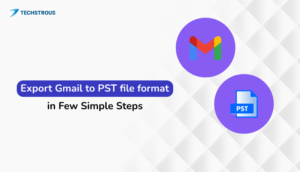Overview
CTA or Call to Action in websites is a potent tool for businesses to get more conversions. It not only helps businesses but also assists visitors to learn more about the website. This article provides you with detailed information about CTA. You will learn how to create a Call to Action that aligns with your business and choose the best CTA from different options. So make sure to read the article till the end.
What is a Call to Action in Websites?
A Call to Action (CTA) instructs visitors what step to take next. When visitors land on your website, the CTA encourages them to take action, as its name suggests “Call to Action”. It often helps businesses generate leads by guiding customers to product pages.
It is usually in the form of a clickable button, text, or any graphic. However, the main objective of a CTA remains the same. Imperative verbs are used for more impact. Some common examples are click here, follow us, sign up for newsletters, etc.
There can be multiple CTAs, on a webpage leading toward different destinations. On a webpage, you may have seen two alternatives Purchase Now and Free Trial. If someone is interested in purchasing the product, they will click on Purchase Now. On the contrary, the free trial option provides another alternative.
What is the Importance of CTA in Blog/Website?
The core reason for using a Call to Action in websites is to make users take a desired action suitable to your business goals. It does not mean misleading the viewers but forwarding them to the next steps of the customer journey. Some other benefits of adding a Call to Action to your webpage are listed below:
Along with high-quality content, CTA converts visitors into customers, therefore improving the conversion ratio. A person looking for a solution to a specific query lands on your blog post. They liked the post and subscribed to the newsletter. Furthermore, soon the visitor purchased an eBook. This way CTA in blog helps bring new customers.
If you do not provide what to do next, the viewer might end up leaving the page. Instead of that, help them to check other articles after they finish reading one. This way you eliminate the confusion of being lost once the post has been read.
Another important reason for adding a Call to Action in websites is that it navigates the viewer to their desired destination. If someone wants to purchase the product, the Purchase Now button ensures that they will have no difficulty in reaching the checkout page.
CTAs such as – Like, Comment, Share, etc., enable viewers to interact. Another perspective is that by using these CTAs, you make your website interactive and enhance user engagement.
When you have different types of audiences, you can target all of them by adding multiple CTAs. It provides alternative options. Therefore, your audience can choose anyone as per their preferences. A common example is “Buy subscription” or “Free Trial”.
Different Types of Call to Action
Although there are different types of CTA depending on your business goals, we share a few types. They are generally used in most industries.
#1. Content Marketing: – Call-to-actions associated with digital marketing or content marketing are used in blog posts and online articles. Every business website has a blog section that contains blog posts centered around the business. Therefore, you see these CTAs are the most common. Read more, Comment, Like, Share, Subscribe to newsletter, etc. are some CTA examples.
#2. Lead Generating: – Lead generation means creating interest in a product or service and then converting that interest into sales. Most businesses use CTAs which ask for contact information or direct a visitor toward the sales team so that they can pitch their product. These are the lead-generation CTAs.
The objective here is to generate leads for business. Some common examples are Sign up, contact sales, asking for contact no. etc.
#3. Product Seller or Service Provider: – Businesses that have products or provide services use CTAs like Purchase Now, Try Demo, Free Trial, etc. It convinces visitors to use the product or service and further helps businesses to get more customers. You often see the Add to Cart button on eCommerce websites. Such Call-to-actions fall under this category.
Practices for Creating a Compelling Call to Action in Websites
Before diving into tips and tricks to write a good CTA that helps in conversion, you should focus on one thing: Every visitor landing on your website has a motive. A call to Action that assists viewers fulfill this motive and at the same time, helps businesses to achieve their goals is considered an effective CTA.
#1. Define a Clear Objective: – Creating an irresistible Call to Action starts with a clear business goal. What do you want from your viewers? Where do you want them to direct? What action should your visitors take? Answers to all these questions help you to create a compelling CTA.
#2. Know Your Audience: – Once you find out your objective, the next step is to understand what your visitors want from your website. No business can thrive without understanding their consumer’s needs and how to fulfill them. Understanding what they want makes it easy to curate your Call to Action in websites as per their requirements.
#3. Visibility Matters: – If your call to action button is not visible, it will not give you the desired results, no matter how impactful it is. The CTA should be distinguished from the rest of the content so that the visitor can notice it. Choose the text, font, size, and color wisely so that it becomes visible.
While using multiple CTAs, ensure to prioritize them and format accordingly.
#4. Make It Short and Crisp: – As CTAs are the final push for a visitor toward conversion, the statement should be clear and concise. Creating the foundation which is already done by the blog is not necessary. Read more, Download Now, Click Here, etc. are some great examples because they convey the message precisely.
#5. Use Action Verbs with a Sense of Urgency:- Command verbs make more impact than any vague statement. Therefore, using action verbs is more impactful in CTAs. Moreover, you must create a sense of scarcity by using the words Now or Here. It implicitly convinces the visitor that they should act immediately.
A/B Testing – Choose the Most Suitable Call to Action
An effective method to identify which CTA works best for your audience is A/B testing. It is an approach in which you test different CTAs on different pages and evaluate their performance. The metrics used here to calculate their results are generally CTR and conversion as they directly show audience behavior when encountering the CTA.
This approach delivers you the data required for figuring out which is the best Call to Action for your website. Also, a single type of Call to Action in websites may not work for every visitor. Therefore, you need to make the necessary alterations as per the requirement.
Moreover, if a time-bound CTA is used, like providing an offer for Christmas, ensure to update it after that time.
Conclusion
Call to Action in websites is a short command but can lead to better business conversion. You can implement CTAs as per your requirements and see the results. There is no one fixed rule for creating a CTA, however, by identifying your objective and knowing your audience’s needs, you can write a better one. Also, compare different alternatives using the A/B testing approach to choose the best one.
Frequently Asked Questions
What is a Call to Action for SEO?
A Call to Action is a command for the user to take the next step. It acts as a navigation guide to reach the desired destination. The CTA helps businesses achieve their goals and also assists viewers in proceeding to the next step of the customer journey.
What are some Call to Action examples?
Read more, Learn more, Click here, Sign up, Subscribe, Comment, Purchase Now, Free Trial, etc. are some common examples that you encounter often.
How can I write a good CTA?
To create a compelling CTA that suits your business objective, you need to follow the below steps:
- Define a clear business goal
- Know your audience
- Make it Visible
- Write Short and Crisp
- Use Action Verbs with a Sense of Urgency




